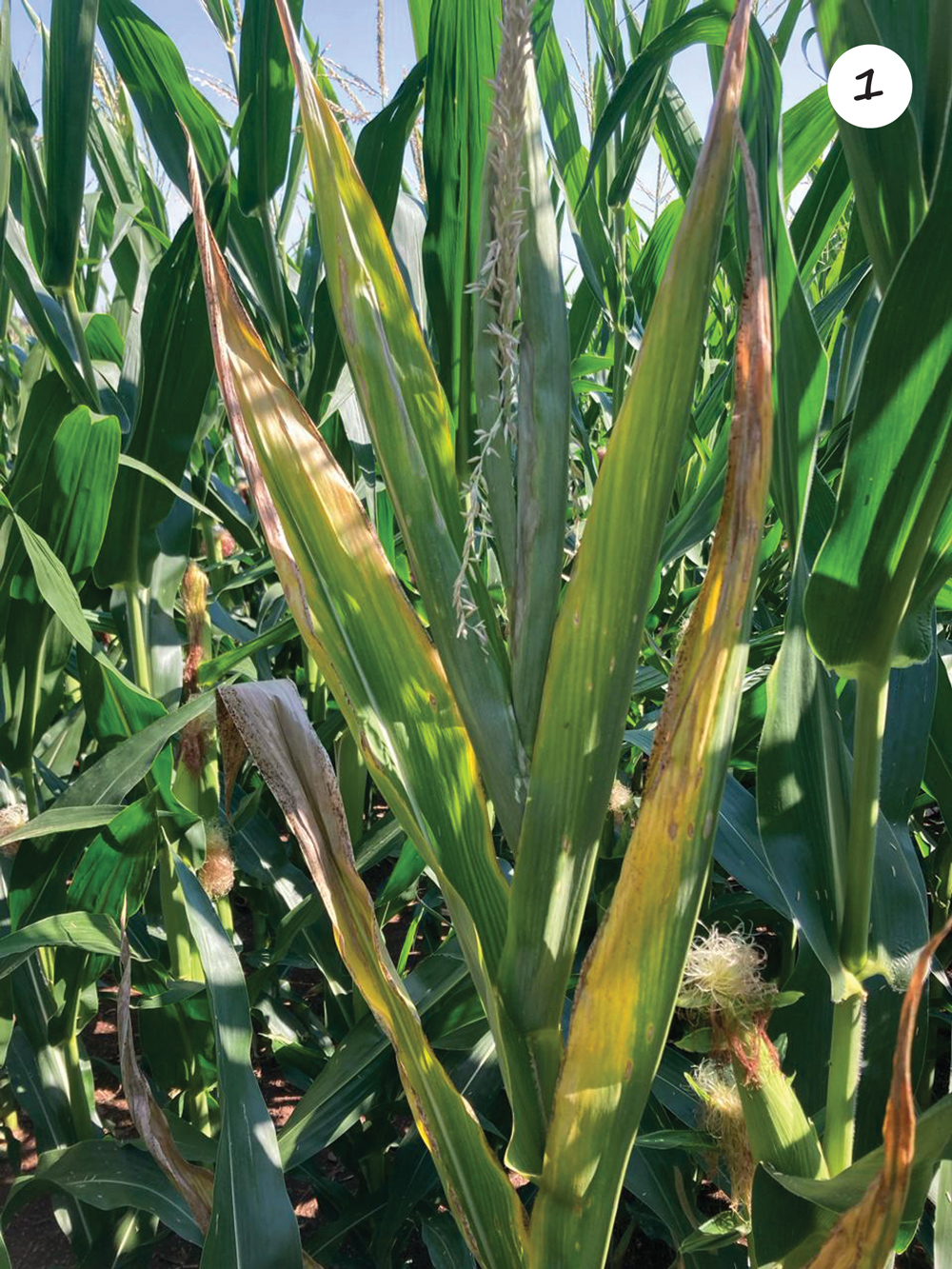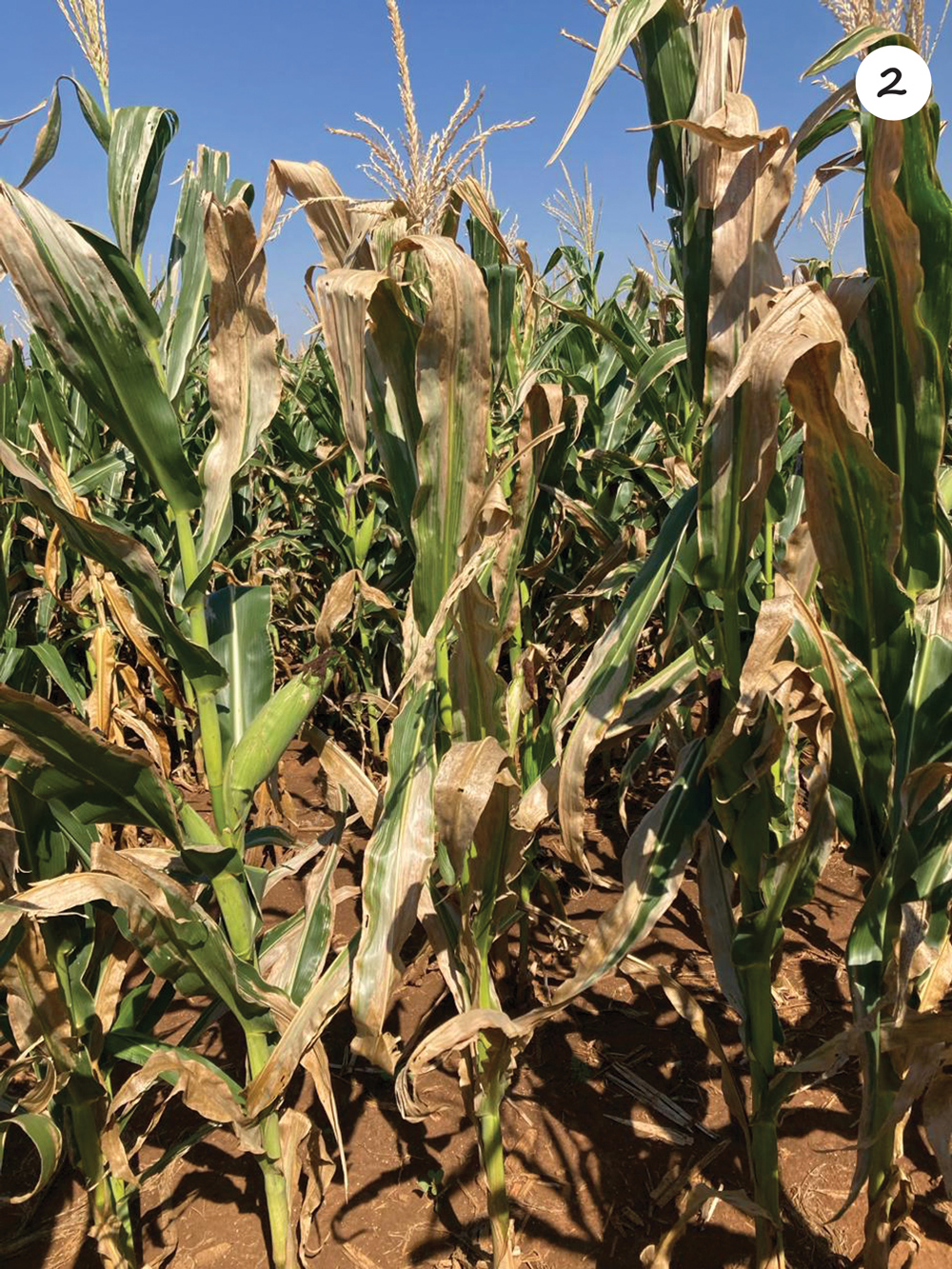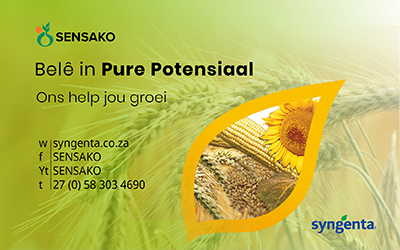

Dr Henry Njom,
ARC-Grain Crops, Potchefstroom
The Department of Agriculture (DoA) has issued an alert on the detection of Goss’s wilt on maize (Zea mays) in South Africa (Njom et al., 2025). Goss’s wilt was detected and positively identified (molecularly) in four provinces of the country, namely the Free State, North West, Gauteng, and Eastern Cape. The aim of this article is to give producers as much information as possible regarding this disease. Since the presence of Goss’s wilt was only recently confirmed in South Africa, information given is primarily based on literature from the United States of America (US).
What is Goss’s wilt and where did it come from?
Goss’s wilt and leaf blight of maize are caused by the gram-positive bacterium Clavibacter michiganensis subsp. nebraskensis and is an economically important plant disease in North America. It presents no health risk to humans and animals. This plant pathogen (EPPO code: CORBMI) is included within the high-risk list of quarantine pathogens by several plant protection organisations, hence it is under strict quarantine control around the world. (EPPO codes are computer codes which were developed for plants, pests, and pathogens which are important in agriculture and plant protection.)
It was reported for the first time on maize in Nebraska in the US in 1969. Initially epidemics were restricted to Nebraska and parts of Colorado, Kansas, and South Dakota. From 2009 to 2011 it was reported in Iowa, Illinois, Indiana, Minnesota, and Wisconsin. Major epidemics led to leaf loss, reduction of lower stalk integrity, and reduced yields (up to 50% losses). In the last week of January 2024, the ARC-Grain Crops received maize samples with symptoms resembling that of Goss’s wilt and northern corn leaf blight.
The presence of bacteria was clear, but as Goss’s wilt is not known to occur in South Africa, researchers were sceptical. As more samples started pouring in, it was realised that something was amiss. Numerous samples were then collected from various localities stretching from north of Parys, across Fochville and Carletonville to Lichtenburg. The DoA was informed, and samples were sent to DoA-accredited laboratories in the Western Cape and Pretoria. Here, Clavibacter michiganensis subsp. nebraskensis was confirmed by molecular methods (PCR and sequencing). It cannot be confirmed at this stage how the Goss’s wilt bacteria entered South African maize production fields, but a description of the epidemiology/disease development may give some insight.
Epidemiology and disease development
According to literature, seed-borne transmission rates are low and therefore it seems unlikely that seed transmission could introduce enough inoculum to create a disease outbreak in a single growing season as was experienced in the 2023/2024 season. It is more probably due to the gradual, undetected build-up of inoculum on crop residue from susceptible hybrids grown in a continuous maize system rather than dispersal from point sources such as a seed transmission event in a single season (Eggenberger et al., 2016).
Infected maize residue is the primary source of inoculum for Goss’s wilt. The pathogen overwinters on the residue or near the soil surface for at least 10 to 15 months. In addition to maize, several gramineous plant species (sorghum, ryegrass, and sugarcane) can act as secondary hosts for Goss’s wilt. Infections predominantly occur through wounds on the maize plant created by heavy rain, hail, or sand blasting during rainstorms. During these storms, wind and water droplets can disseminate inoculum within and between maize fields, where inoculum will enter plant wounds.
It is also possible for the bacterium to multiply on non-injured maize leaves and initiate infections via natural openings such as hydathodes, the base of trichomes, and stomata. Goss’s wilt will then spread systematically in plants after leaves are infected.
Plants can be infected at any growth stage, and wet weather and high relative humidity favour development and spread. The disease is also capable of spreading under drought conditions.
The symptoms of Goss’s wilt and the effect on maize production
Two disease phases are associated with Goss’s wilt infection: a leaf blight phase (Photo 1) and a systemic wilt phase (Photo 2).

(Photo: Dr BC Flett)

(Photo: Dr BC Flett)
Leaf blight phase symptoms
Infection of older plants usually results in leaf blight, the symptoms of which are large tan to grey elongated oval leaf lesions that extend parallel to the leaf veins. Leaf blight lesions on leaves of susceptible maize hybrids are large (6 to >15 cm in length). Initially, they are light green to yellow and quickly become necrotic. On resistant hybrids, lesions are smaller (2 to 6 cm) and reddish. Young lesions appear as streaks of light green tissue with water soaking on the leaf before the tan lesions develop. As these streaks coalesce, dark green to black scattered, water-soaked spots (referred to as freckles) can be seen (Photo 3).
When held in the light these freckles can seem translucent and consist of glossy droplets of bacterial ooze. When dried it can be compared to varnish. Leaf infections with Goss’s wilt during vegetative and flowering stages will have a greater impact on yield reduction due to loss of photosynthetic area and a subsequent reduction in ear and maize kernel size. Leaf infections later in the plant growth stages will have little impact on yield. Yield reductions of 50% have been documented when susceptible hybrids were infected early in the growing season.


Systemic wilt phase
The systemic wilt phase is less common and is often first observed in the early vegetative stages of growth (maize growth stages V2 to V6). Bacterial infection takes place through seeds, roots, and stalks and will discolour and plug the xylem tissues with a slimy rot. This restricts upward movement of water and nutrients, thereby leading to wilting and death of infected plants. Wilted plants will appear drought stressed with weakened stalks that will be susceptible to lodging. Lodged plants can lead to a reduction in grain quality if ears touch the soil.
Disease management
Goss’s wilt monitoring and research under South African conditions should be priorities in areas where the disease has been reported. The ARC-Grain Crops hereby request producers that are suspecting the presence of Goss’s wilt or any other bacterial diseases in their maize fields to contact us. Samples can be collected and submitted to our laboratory in Potchefstroom. Information gained from producers in this way will assist in assessing the situation of bacterial diseases in South Africa and the collection and identification of bacterial isolates that are critical to future research efforts.
Resistance
The best way to manage Goss’s wilt is to plant highly resistant maize hybrids. While no maize genotype will be completely immune to the disease, various levels of resistance can occur in maize lines. This highlights the importance of screening maize hybrids under South African field conditions. Resistance to Goss’s wilt can involve both vascular and nonvascular components (Osdaghi et al., 2022). It is reported that resistant maize lines exhibit decreased bacterial spread in the vasculature and the mesophyll. A dense xylem matrix can restrict movement and deform bacterial cells.
Chemicals
Goss’s wilt is a bacterial disease and therefore fungicides do not work against this disease. No curative measures are available as bacteria cannot be effectively controlled chemically.
Cultural control
Since this bacterial pathogen survives in infected stubble, reduced movement of infected stubble between fields and removal of infected stubble by ploughing can reduce spread and initial inoculum load. Keep in mind that stubble control will reduce inoculum but will not prevent the disease. In conservation agriculture systems where stubble is retained, additional control can be achieved by rotating crops with non-hosts such as soybeans, dry beans, small grains, or alfalfa. Rotating with non-hosts will help to remove the primary inoculum for the subsequent maize crop. Weed control of alternate hosts (gramineous plant species) will also reduce initial inoculum levels.
Drs Belinda Janse van Rensburg (018 299 6357) and Henry Njom (018 299 6225) can be contacted for further information or to assist with any disease identifications.
References
- Eggenberger, S, Diaz-Arias, MM, Gougherty, AV, Nutter, FW Jr., Sernett, J & Robertson, AE. 2016. Dissemination of Goss’s wilt of corn and epiphytic Clavibacter michiganensis subsp. nebraskensis from inoculum point sources. Plant Disease, 100, 686 – 695.
- Njom, H, Flett, BC, Janse van Rensburg, B, Mthembu, Y & Rambauli, M. 2025. Advisory note: Goss’s Wilt on Maize in South Africa. Published by: Department of Agriculture, Land Reform and Rural Development.
- Osdaghi, E, Robertson, A, Jackson-Ziems, TA, Abachi, H, Li, X & Harveson, RM. 2022. Clavibacter nebraskensis causing Goss’s wilt of maize: Five decades of detaining the enemy in the New World. Molecular Plant Pathology, 24:675 – 692.



















